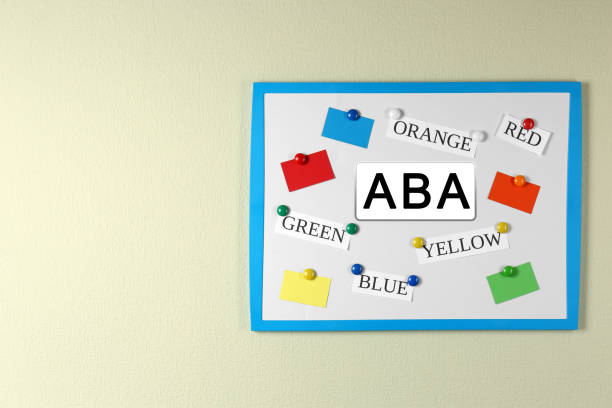Understanding when to seek an Applied Behavior Analysis (ABA) assessment is crucial for addressing developmental concerns in children. ABA evaluations help identify specific behavioral challenges and strengths, allowing for tailored interventions that support a child’s growth. For detailed information, visit the ABA Assessment Services page to learn how early evaluations can guide the path to individualized care.
Insights: Recognizing the Need for an ABA Assessment
Many children go through phases of behavioral changes, but some signs indicate the need for a closer look through professional assessment. Here are the most common behavioral indicators:
- Limited Verbal Communication: Difficulty expressing needs, delayed speech, or limited vocabulary.
- Lack of Social Engagement: Avoids eye contact, doesn’t respond to name, or prefers to play alone consistently.
- Repetitive Motions: Hand-flapping, spinning objects, or repeating the same actions frequently.
- Rigid Routines: Extreme distress when routines are interrupted or altered.
- Emotional Outbursts: Frequent meltdowns, frustration, or trouble with emotional regulation.
- Sensory Sensitivities: Overreacting to light, sound, touch, or textures.
Early recognition of these behaviors enables timely interventions that support a child’s development more effectively.
Pros & Cons of Early ABA Assessments
Pros:
- Informed Interventions: Assessments provide a full behavioral profile, making treatment plans more effective.
- Early Support: Beginning therapy early often leads to better long-term outcomes in communication, behavior, and social skills.
- Parent Empowerment: Families gain understanding and tools to support their child.
Cons:
- Time Commitment: Assessment sessions can take several hours or span multiple days.
- Emotional Challenges: Accepting a need for assessment may be emotionally difficult for some families.
- Financial Considerations: Depending on insurance, there may be costs associated with assessments.
While there are challenges, the long-term advantages of early assessment far outweigh the short-term difficulties.
Examples: Real-Life Behavioral Scenarios
Imagine a 3-year-old child who rarely responds when their name is called, resists interacting with other children, and becomes upset if bedtime doesn’t follow a very specific order. These behaviors might prompt parents to consider an ABA assessment.
Another child may speak clearly but repeat phrases over and over or focus only on one toy in a repetitive way. Even though the child is verbal, these behaviors may still signal the need for further evaluation.
Advanced How-Tos: Getting Ready for an ABA Assessment
Preparing for an ABA assessment helps both professionals and parents gain better clarity. Here’s how to start:
- Document Patterns: Keep notes of behavior frequency, triggers, and contexts. A simple behavior log can be very helpful.
- Talk to Your Pediatrician: Share concerns and request referrals if needed.
- Schedule with Certified Providers: Find board-certified behavior analysts (BCBAs) with experience in child assessments.
- Provide Developmental History: Share past medical, developmental, and behavioral information.
Organized preparation ensures that the assessment captures the full picture.
Specialized Tips: Easing the Assessment Process
- Stay Calm and Positive: Children pick up on parental stress; a calm environment helps.
- Maintain Familiar Routines: Stick to usual sleep, meal, and playtimes.
- Use Social Stories: Simple narratives about visiting a behavior therapist can help a child feel more comfortable.
- Bring Comfort Items: A favorite toy or blanket can reduce anxiety during sessions.
These strategies can make assessments smoother for both the child and the family.
In-Depth Guide: What Happens During an ABA Assessment?
An ABA assessment typically follows a structured process:
- Parent Interview: Professionals gather background information on development, medical history, and behavior.
- Direct Observation: The child is observed in natural or structured settings, noting how they interact and respond.
- Functional Behavior Analysis: Professionals examine why certain behaviors occur and what triggers them.
- Standardized Tools: Evaluations like the VB-MAPP (Verbal Behavior Milestones Assessment and Placement Program) may be used.
- Assessment Report: A detailed summary is shared, along with recommendations for ABA therapy if needed.
This process provides a roadmap for therapy and educational support tailored to the child.
Help/Support: Resources for Parents
- Books: Titles like The Verbal Behavior Approach or Uniquely Human help parents understand ABA principles.
- Parent Training: Many ABA providers offer training so parents can implement strategies at home.
- Support Groups: Local and online communities provide emotional support and advice.
- School Collaboration: Work with teachers and support staff to align ABA strategies with the child’s school environment.
Accessing these resources builds a strong support system for both the child and family.
How Things Work: Post-Assessment and Next Steps
After the assessment, the behavior analyst creates an individualized treatment plan based on findings. Here’s how it progresses:
- Goal Setting: Prioritize key behavioral and developmental goals.
- Therapy Sessions: Regular sessions focus on communication, play skills, emotional regulation, and social interaction.
- Progress Monitoring: Data is collected consistently, and plans are updated based on what works best for the child.
- Family Involvement: Parents participate in sessions, review progress, and receive training to reinforce strategies at home.
This collaborative model ensures ongoing support and adaptation as the child grows.
FAQ: ABA Assessment Indicators
Q: What age should my child be for an ABA assessment?
A: ABA assessments can begin as early as 18 months, especially if developmental concerns arise.
Q: Is an autism diagnosis required for an ABA assessment?
A: No, ABA assessments can support children with a variety of behavioral and developmental needs.
Q: How long does an ABA assessment take?
A: The process usually takes a few sessions over 1–2 weeks, depending on the child and provider.
Q: What happens after the assessment?
A: A tailored therapy plan is created and implemented, with regular progress reviews and parent collaboration.
Q: Are assessments covered by insurance?
A: Many insurance providers cover ABA assessments, especially when linked to developmental concerns. Check your plan for details.
At the heart of every child’s behavioral journey is the opportunity for growth and support. Recognizing the key indicators that prompt an ABA assessment can lead to life-changing progress. Families looking for guidance and professional help can explore the available ABA services offered by 24/7 DCT, where compassionate care meets expert behavioral evaluation


